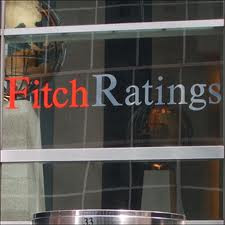
While the European Union and the United States is buffeted by a debt crisis without precedent, Thursday, rating agency Fitch said it may lower the sovereign rating of China in the next two years. Reasons: the heavy debt the Chinese banking sector, the latter having provided massive loans in recent months.
In an interview with Reuters, Andrew Colquhoun, head of Asia Pacific ratings at Fitch, has considered possible a downgrade in China from 12 to 24 months. "We anticipate a material deterioration in the quality of bank assets. If the problems of the sector are changing as we anticipate, or even worse, the next 12 to 24 months, this would lead us to lower the note," he warned.
Last April, already, Fitch lowered its rating outlook on China's "stable" to "negative", citing concerns that date on the financial stability of the country following the decision in Beijing to increase bank credit to maintain China's economic growth. Currently, Fitch assigns the note to China 'AA-', corresponding to the fourth highest level of its scale, position equivalent to that of Italy and a notch below that of Spain.
In early July, the rating agency Moody's had indicated that for its public debt to China stood at 36% of its Gross Domestic Product (GDP), taking into account the share of the debts of local governments for which Beijing assume direct responsibility. A few days earlier, the National Audit Office had indicated that the debts of the provinces, municipalities and districts Chinese rose late 2010 to 27% of Chinese GDP, representing a total of 1.163 trillion Euros.
The same office had, however, insisted that 63% of this debt would be repaid through revenue budget.
Now where the rub is; that they have borrowed huge amounts from the global financial crisis, via means of ad hoc structures called "platforms financing" or PFL.
Objective: To finance infrastructure and housing projects not always profitable.
But according to the National Audit Office; the "ability to pay is low and faces potential risks in certain areas and certain industries." Indeed, in a snowball effect, some local governments had to make new loans ... to repay the debts already contracted, also heavily dependent on land sales to meet their deadlines.
According to the auditors of governments of China, 108.3 billion yuan (11.8 billion) of loans were made or used fraudulently, the money ends up in banks or stock markets real estate.
Indeed, point out that as a guarantee, the PFL received capital that comes from land assets transferred by the community investment fund and ... fraud, bank lending in the short term what notionally provide a PFL time he gets a larger credit. All of which leads ultimately to the National Audit Office that the platforms of local funding must be "cleaned and regulated."
A bit worried, Moody's said that Chinese banks have lent billions of 8500 yuan (905 billion) out of 10'700 billion yuan (1.163 trillion euros) to local governments ... a situation that causes a high risk exposure.
"The debts existed before the global financial crisis, but they quickly accumulated in the last two years while investment by local governments has been used as a key tool" to boost the economy, adds Moody's.























